Veneer Grafting
Grafting is the process of joining the stock and scion of two different plants of same or different species with the aim of producing a superior plant than the existing one. There are different types of grafting suitable for different plant species such as Approach Grafting, Top Grafting or Veneer Grafting, Side Grafting, Stone Grafting. In this blog post, we will be learning about the Veneer Grafting sometimes also known as Side Grafting.

This method is applied for the propagation of Mango trees. Veneer Grafting is a type of grafting in which the scion is cut at the ‘V’ shape while the Stock is sliced cut at the side mainly performed in mango. After the scion is fitted in stock, they form the graft union and grow as a single plant.
Requirements
1. Scion
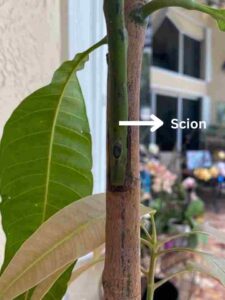
It is the part of graft which is taken from superior or high producing variety. After grafting, the scion grows as shoot and bears branches, flowers and fruits. If we want good quality fruit, then – We should choose the scion from the superior variety. In veneer Grafting, We take the scion from the matured plant branch. The branchlet (1-2 Years Old) which is in bud swelling stage is considered as the best for scion material. All the leaves of scion should be removed and it should be green.
2. Rootstock
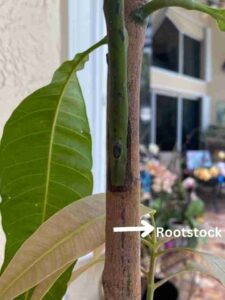
It is the part of graft which is taken from a locally adapted variety. After Grafting, the stock grows as root and bears rootlets, root hairs. It should be strong and able to fetch the water, nutrients from the soil as well as prevent plants from lodging by providing proper anchorage. In Veneer Grafting, we take the rootstock from the seedling. The seedling should be healthy and well fertilized. Its age can be around 1.5 months.
Also Read: Pineapple Farming : Ultimate Successful Guide
3. Screatur
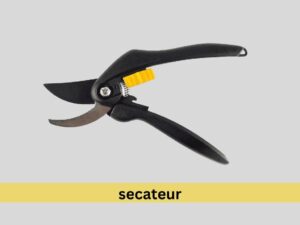
It is an equipment used for cutting the stocks and scions from the plant. It has handles and sharp cutting sides.
4. Grafting Knife

It is used to make the side cut in stock as well as to make wedge cut in scion.
5. Grafting Tape
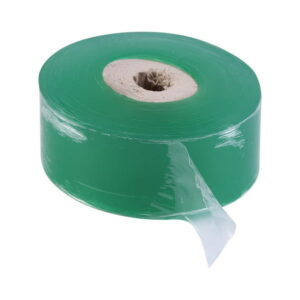
It is a transparent and elastic plastic type tape used to tie the point of grafting.
Procedure Of Veneer Grafting
- Take a healthy seedling and make a thin slice like cut in the side of the stem, (4-5) cm above the soil level. The cutting should remove the outer bark layer and expose the inner sap flowing cambium layer/wood.
- Now, Take a scion and make a wedge shaped cut from one side by removing bark and exposing the sap flowing woody layer while let the other side bark as it is.
Tip: Try to maintain the same length of cut in Scion and Rootstock so that they fit perfectly.
- Then – Fit the scion into the stock in such a way that the Cut Section of scion is placed just on the Cut Section of stock. There should be any exposed area or air gaps.
- Take a grafting tape and wrap it around the joining point. Make multiple rounds and ensure it’s water-proof.
Note: After wrapping the tape, you can remove the tip portion of stock as the new scion connected will work as a new shoot.
- Keep the graft in semi shade condition. The graft union will form in around one month and you can expect new bud or small leaves growth on scion after around 3 weeks.
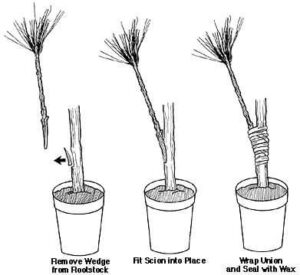
Note: You can also do Veneer Grafting on old plants just by assuming a branch as rootstock.
How Graft Union Occurs?
Remember, We make a cut on both, scion and stock to expose cambium, right? This cambium is two-celled thick active and growing layer. When the cambiums of both scion and stock are placed together and tied with Grafting tape, the cell divides and forms a callus which join the two parts and make them one. This way the graft union occurs. If there isn’t successful Graft Union, then – Your graft will be dead and no plant will grow.
Precautions In Veneer Grafting
1. The scion taken from the desired variety should be at least (1-2) years old.
2. Scion taken should be in the bud swelling stage.
3. The stock should be healthy and taken from a locally adapted variety.
4. The cut should be sharp.
5. The scion and stock should be firmly joined and wrapped with Grafting Tape to make water proof.
6. Remove all leaves from scion and keep (2-3) leaves in stock.
Advantages Of Veneer Grafting
- Veneer Grafting is perfect in case you have different sizes of scion and rootstock.
- Fruiting will be much earlier than the plant grown from seedling.
- Improve fruit size and taste.
- Better adaptation to environmental stress.
- Trees can be grown in less time.
- More trees can be propagated in a short period of time.
Conclusion
Veneer Grafting is one of the most successful methods of Propagation in Mango trees. If done with proper procedure, It can give good results and you can expect harvest within 1.5 years.
